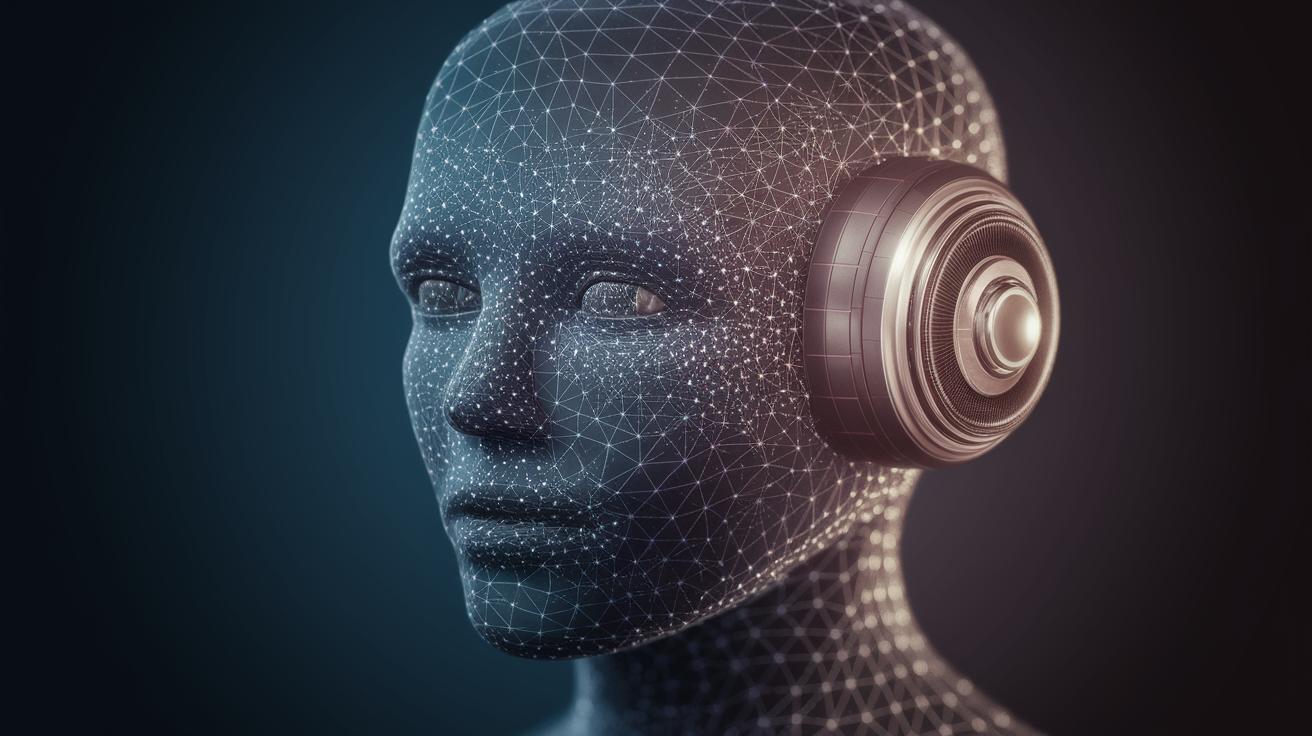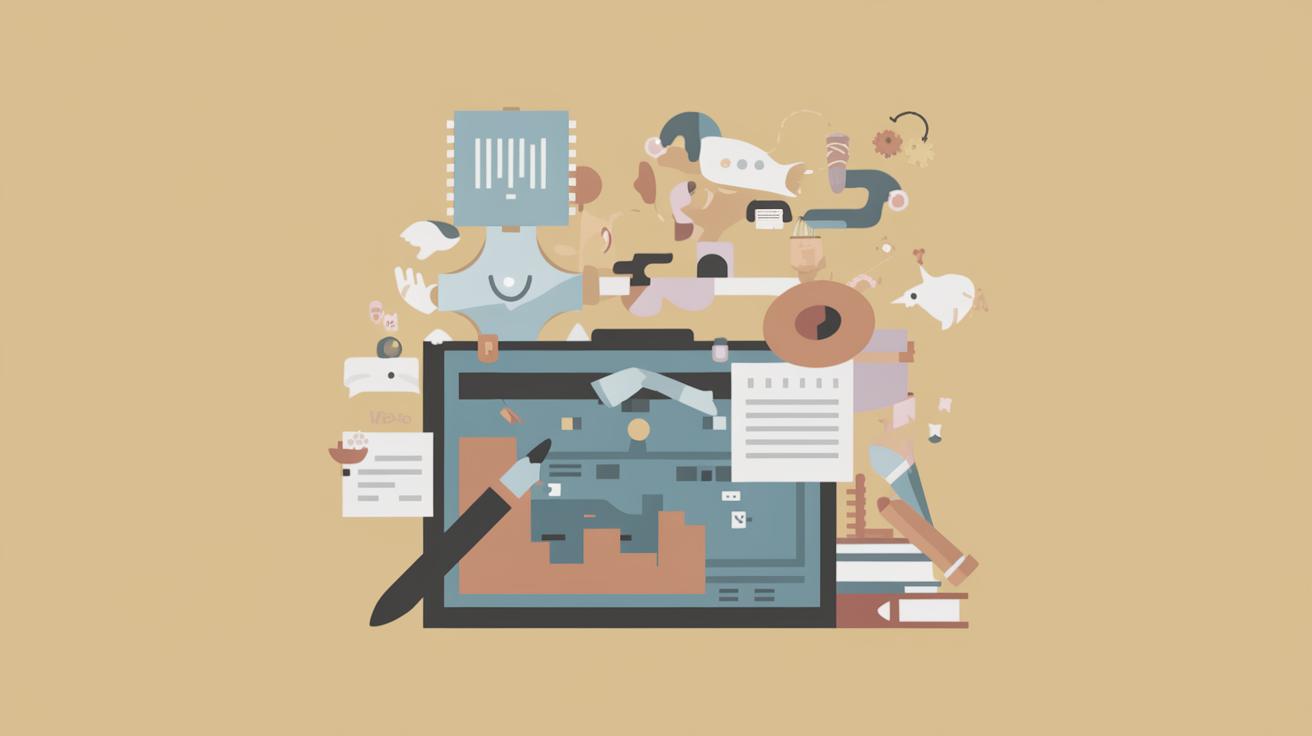How to Integrate Technology into Art
The interweaving of technology and art forms a dynamic tapestry that opens new frontiers for creativity and expression. This blog post explores different technological tools and platforms that artists can leverage to enhance their work. We’ll discuss the rise of digital art tools, the immersive experiences of VR and AR, and how online communities foster creative collaboration. Furthermore, we’ll delve into educational platforms and discuss the limitations of integrating technology into art, including accessibility and technical challenges. Finally, we’ll provide some practical next steps for artists and educators looking to embrace this digital evolution.
Podcast Transcript
In this podcast, we’re exploring the fascinating world where art meets technology. We discuss how artists can use digital tools to enhance their creativity, the role of VR and AR in creating immersive experiences, and the importance of online communities in fostering collaboration. We’ll also touch upon the educational resources available online and examine the challenges artists face when integrating technology into their practice. Stay tuned!
Embracing Technology in the Arts
The integration of technology into the arts sector has opened new horizons for creative expression. Artists today have unprecedented access to tools that can transform their traditional mediums into digitally enhanced masterpieces. By embracing technology, artists are not only preserving their work but also making it accessible to a global audience. The digitization of art enables broader reach and interaction, leading to increased engagement and appreciation from art lovers worldwide.
Moreover, technological integration inspires innovative art forms that challenge conventional boundaries. With platforms like social media, artists can experiment with interactive installations and multimedia projects that captivate diverse audiences. By leveraging technology, artists can break free from the limitations of physical space and time, ultimately democratizing art and making it more inclusive and dynamic.
Digital Art Tools
One of the most significant advancements in integrating technology with art is the development of digital art tools. Software programs like Adobe Creative Cloud, Procreate, and Corel Painter provide artists with a vast array of brushes, textures, and effects that mimic traditional art mediums. These tools offer unparalleled flexibility, allowing artists to experiment freely, undo mistakes, and explore endless creative possibilities without the constraints of physical materials.
Furthermore, digital art tools enable artists to collaborate easily and share their work across platforms. They can obtain feedback, engage with new audiences, and even create digital portfolios to showcase their skills. By mastering these tools, artists can expand their creative repertoire and stay relevant in an increasingly digital world, where technology continually redefines the boundaries of art.
Virtual Reality (VR) and Augmented Reality (AR)
Virtual Reality (VR) and Augmented Reality (AR) offer artists immersive environments to push the boundaries of creativity. VR allows artists to create three-dimensional spaces where viewers can interact with art in entirely new ways, making the experience more engaging and personal. Museums and galleries are leveraging VR to recreate historical art settings and allow virtual tours, bringing art to those who may not have the opportunity to visit in person.
AR, on the other hand, overlays digital elements onto the real world, blending the virtual with the physical. Artists can use AR to create interactive installations and enhance traditional art forms by adding dynamic layers. These technologies have also become powerful tools for storytelling, enabling artists to share narratives that transcend the physical space and create lasting impressions on audiences.
Online Art Communities and Collaboration
The rise of online art communities has facilitated a global network for artists to collaborate, share ideas, and support each other’s growth. Platforms like DeviantArt, Behance, and ArtStation allow artists to showcase their work, receive constructive feedback, and connect with peers and potential clients worldwide. These communities foster a sense of belonging and provide a platform for artistic discourse, inspiring artists to push their creative boundaries.
Online collaborations are no longer limited by geographical constraints, allowing artists to engage in joint projects with peers from different cultures and backgrounds. This fusion of ideas and perspectives enriches the creative process and leads to the creation of innovative and culturally diverse art forms. Additionally, virtual exhibitions and group projects have become more common, offering artists new ways to collaborate and gain exposure on a global scale.
Interactive Whiteboards and Projectors
Educational institutions and art studios are adopting interactive whiteboards and projectors to facilitate dynamic learning environments. These tools allow artists and students to engage with digital content in a more interactive manner. By projecting digital art projects or using the whiteboard for real-time collaboration, artists can brainstorm, modify, and refine their works collaboratively, enhancing the learning experience.
Interactive whiteboards and projectors also serve as platforms for art educators to demonstrate techniques, share multimedia content, and provide instant feedback. This integration of technology into the art classroom enables a more engaging learning experience, encouraging students to experiment with various digital mediums and embrace technology in their creative journeys.
Online Art Courses and Tutorials
The availability of online art courses and tutorials has democratized art education, making it accessible to anyone with an internet connection. Platforms like Skillshare, Coursera, and YouTube offer a wide range of courses that cover everything from basic drawing techniques to advanced digital painting. These resources are invaluable for self-taught artists looking to hone their skills and learn new techniques.
Online courses provide flexibility, allowing artists to learn at their own pace and revisit content as needed. Participants can engage with instructors, seek feedback, and collaborate with fellow learners, creating a vibrant community centered on shared growth and artistic development. By taking advantage of these resources, artists can expand their creative horizons and remain competitive in a rapidly evolving digital landscape.
The Limitations of Art Technology
Cost and Accessibility
While technology offers many benefits to artists, it also presents challenges in terms of cost and accessibility. High-quality software, hardware, and tools can be expensive, posing a barrier for artists who lack financial resources. Additionally, not all regions have equal access to technology, limiting opportunities for artists in economically disadvantaged areas to benefit from these advancements.
Technical Challenges
Integrating technology into art often requires a steep learning curve. Artists may face technical challenges when using unfamiliar software or tools, which can be time-consuming and frustrating. Continuous updates and new versions may also necessitate ongoing training, posing a burden for artists trying to keep up with rapid technological advancements.
Loss of Hands-on Experience
While digital tools offer incredible flexibility, they can also lead to a loss of hands-on experience. Traditional art forms involve physical interaction with materials, offering tactile feedback and sensory engagement that digital art cannot replicate. This shift can affect an artist’s connection to their work and lead to a preference for digital mediums over traditional techniques.
Teacher Training and Support
For art educators, the integration of technology into their curriculum requires adequate training and support. Teachers need to be proficient with digital tools and platforms to effectively guide their students. Without proper training, there’s a risk of technology becoming an impediment rather than an enhancement to the learning process.
Next Steps
| Category | Description | Impact |
|---|---|---|
| Digital Art Tools | Software providing various artistic resources | Enhances creativity, flexibility, and collaboration |
| VR and AR | Immersive technologies for interactive art | Engages audiences through novel experiences |
| Online Communities | Platforms for artist collaboration and feedback | Fosters global connections and innovative ideas |
| Interactive Learning Tools | Whiteboards and projectors in education | Facilitates collaborative and dynamic learning |
| Online Courses | Digital art education resources | Accessible skill development and community engagement |
| Limitations | Challenges in cost, accessibility, and technical skills | Barriers to entry and potential loss of traditional skills |


